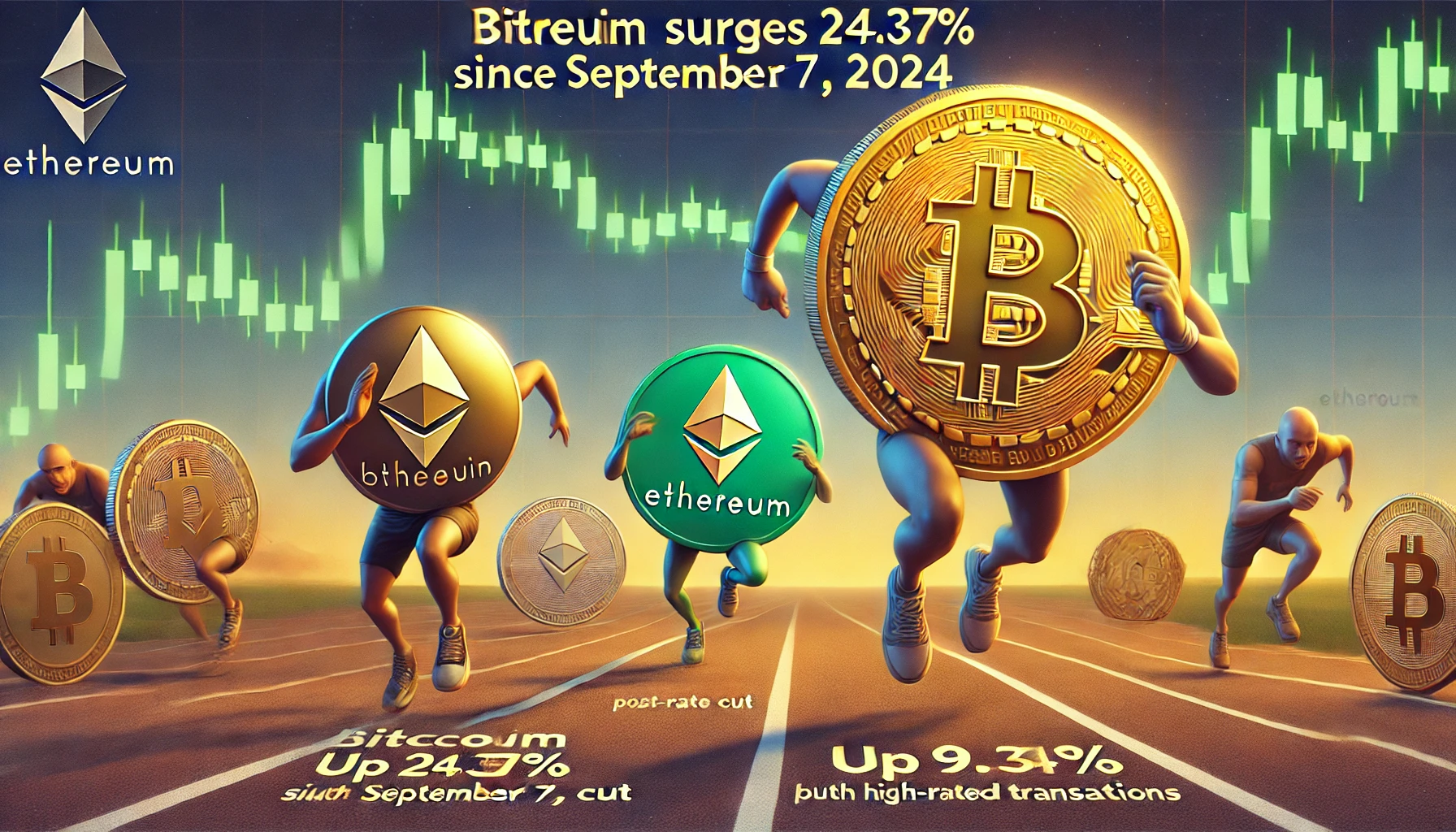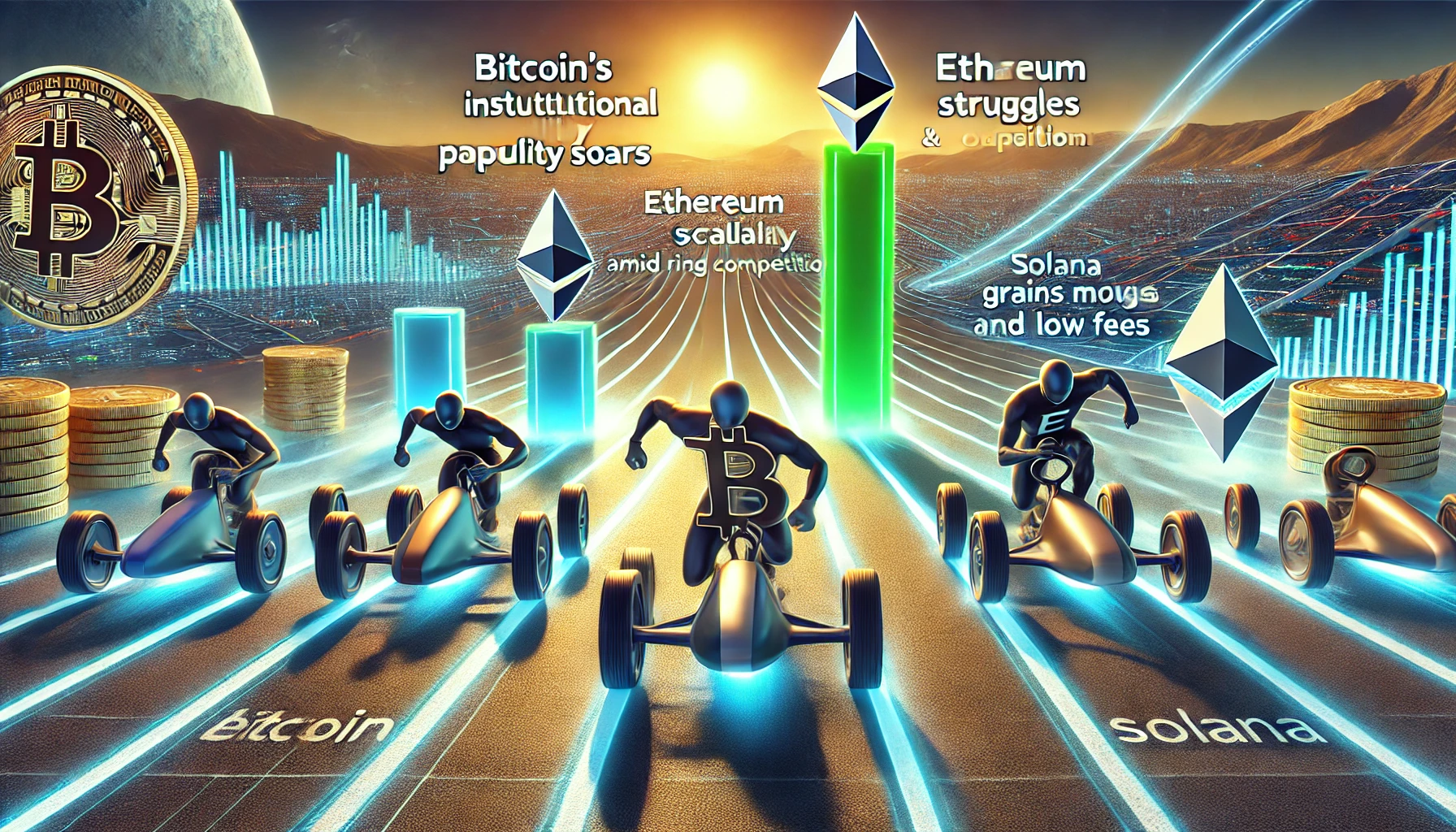All is not right for Ethereum (ETH), the second biggest cryptocurrency by market capitalisation since the rate cut by the Federal Reserve in September 2024. While Bitcoin (BTC) reversed its course since then, moving north following the much-hyped rate decision, Ethereum found it hard to match its moves.
According to a recent report by Kaiko Research, a lot was expected from Ethereum, especially with crypto experts hinting at a major bull run in the month of October. However, Ethereum stayed lukewarm, thereby catching many crypto experts off-guard.
Ethereum Price vs Bitcoin Price Since September 5, 2024
Ethereum was trading at $2408.23 on September 5, 2024, and soon nosedived further to $2238.71 on September 7, 2024. Since then, the ETH price has rebounded big time. As compared to September 5 levels, Ethereum’s price has jumped by 9.44%, whereas it has skyrocketed by 17.73% from September 7 levels to $2635.68 on October 22, 2024. However, crypto analysts and experts believe that Ethereum has failed to match Bitcoin’s performance.

Bitcoin was seen trading at $57202.56 on September 5, 2024, before falling further to $53857.56 on September 7, 2024. Ever since falling below $53000 levels, Bitcoin has totally changed its course despite rising tensions in the middle east. Bitcoin price was $66981.37 at 03:45 pm (EST) on Tuesday, which was 17.73% more when compared with its September 5 price of $57202.56 and a whopping 24.37% when compared with its September 7 low of $53875.56.
Comparing Ethereum’s 17.73% surge and Bitcoin’s 24.37% clearly indicates the difference in performance for the two biggest crypto projects in the world. This article investigates why Ethereum has failed to live up to the hype since September rate cut amid Bitcoin and Solana’s strong performance.
Why Ethereum Missed the September Rate Cut Catalyst?
While many crypto experts were left scratching their heads, Kaiko Research seems to have cracked the code behind Ethereum’s underwhelming performance. According to Kaiko Research, Ethereum’s slow performance isn’t just a fluke. In fact, multiple factors blocked the way for Bitcoin and Solana to match a grand show. These factors range from ever-changing crypto market dynamics and rising competition among altcoins to fundamental changes in Ethereum’s network itself.
The US Federal Reserve made a much-anticipated rate move in September 2024, when it reduced its key rate to be in line with the market expectations. The move was expected to spur growth in risk assets, including crypto projects. Fed rate cuts typically favour the assets that are more speculative or risky in nature because lower interest rates deprive traditional investment options like bonds of their appeal. Due to this factor, both Bitcoin and Ethereum were expected to rise in stature after the rate move. While Bitcoin and Solana maintained the higher trajectory, Ethereum failed to match their moves. So, what exactly is going on with Ethereum?
Kaiko Research Knows What Ethereum Needs
As per the above-mentioned report by Kaiko Research, there are multiple reasons behind Ethereum’s slower-than-expectation performance in the last one and a half month or so. Let’s have a look at some of them below:

1. Going Gets Tough Amid Rising Competition from L1 Projects
Despite Vitalik Buterin’s decentralisation plans, Ethereum has failed to match upbeat performance from other industry leaders like Bitcoin and Solana. One of the biggest factors is the rising competition from fellow layer-1 blockchain projects. Back in the days, Ethereum enjoyed monopoly in the L1 landscape, but many other layer-1 projects have surfaced in the past few years and many of them have found traction among crypto enthusiasts. This all has made life uneasy for Ethereum as the biggest altcoin by market capitalisation. Crypto platforms like Polygon, Avalanche, and Solana offer a lot smarter and cost-effective blockchain solutions to the crypto users.
Solana Raises the Bar Even Higher
While other crypto projects are still looking to find strong feet in the category of new crypto innovations, Solana has already raised the bar high even for the existing crypto juggernauts like Ethereum. Solana’s high throughput and low transaction fees has helped it create a market of its own, which enthuses both users and developers. A number of recent popular meme coins were launched on Solana’s platform, which is a clear indication of its popularity.
Solana not only handles thousands of transactions per second but its cost is a lot cheaper than that of Ethereum which has made it a popular choice worldwide. Moreover, Ethereum’s scalability issues are not helping the crypto platform to keep its advantage over new players. Its high gas fees and network disruptions have magnified its problems over the past few years despite its transition to the Proof-of-Stake (PoS) mechanism through the Ethereum 2.0 upgrade. Unfortunately, the upgrade has failed to find the right answers to the questions Ethereum has been struggling with, especially when it comes to scalability, users have started turning their back on ETH.
2. Bitcoin’s Continuous Popularity Among Institutions
One of the key reasons behind Ethereum’s struggle is Bitcoin’s continuous popularity among institutional investors. As against Ethereum’s better functionality, Bitcoin is still regarded as a much safer and stable store of value by financial institutions. Kaiko Research highlighted that the number of institutional investors has actually increased for Bitcoin in recent years as it creates a strong reputation as a hedge against information and global economic downturn.
As institutions continue flocking to Bitcoin, Ethereum has failed to create similar traction. Bitcoin’s reputation as digital gold has helped it create faith as a lower risk choice for investors, which Ethereum is still far from.
3. Regulatory Uncertainty
The evolution of cryptocurrencies continues when it comes to regulatory developments. Many countries are still in the process of establishing the regulatory compliance laws for cryptocurrencies. While Bitcoin has largely steered clear of the regulatory hurdles, Ethereum stands vulnerable to regulatory scrutiny. Ethereum has often been in the crosshairs of regulators because of decentralised finance and issuance of tokens through initial coin offerings.
Solana Stakes Claim as the Possible Ethereum Alternative
While Ethereum is struggling with its fair share of problems, Solana has successfully emerged as a possible alternative for blockchain users. Solana’s speed, low transaction costs, and scalability solutions have helped it lure a larger audience of developers and investors who are shifting away from Ethereum’s expensive and congested network.

Kaiko Research stated in its report that Solana has recorded a major surge in activity on its network in recent months. Solana’s native token has risen from $129 last month to $169 on Monday, a clear sign of Solana’s emerging victory. Solana’s success came with its fair share of challenges in network outages and technical problems this year. However, it managed to rise above the challenges by ensuring high-frequency transactions at a lot cheaper gas fees than Ethereum.
Has Ethereum Already Lost the Battle?
Kaiko Research has pointed out a number of problems that are stopping Ethereum from taking top flight. However, despite its consistent struggle, Ethereum is far from losing this battle. It’s still the second-largest crypto project and the biggest altcoin by market capitalisation, and it still enjoys a massive advantage over other crypto platforms.
As per the Kaiko Research’s observations, Ethereum will have to expedite implementing its scalability improvements through the Ethereum 2.0 upgrade. In the coming months, a growing institutional interest in NFTs and DeFi could provide the major boost it lacks at the moment. As far as the short-term view is concerned, Ethereum will have to resolve structural issues, better deal with regulatory uncertainties, and offer more fight against Solana and other altcoins.
Although Bitcoin is still a lot larger than any competition in the crypto market, Ethereum will have to pull up its sleeves to ensure its advantage over other layer-1 blockchain platforms. On the flip side, Solana is making good grounds to challenge the hegemony of Ethereum, and soon, it will be able to look directly into Ethereum’s eyes as it provides a lot more to both developers and traders than Ethereum. Faster and cheaper transactions have helped Solana a lot in making its presence felt, whereas the availability of a stable and scalable platform has attracted developers, which is helping it steal the limelight.









